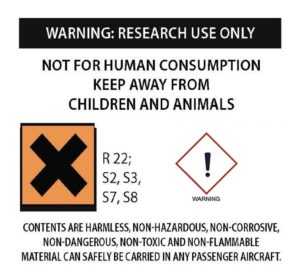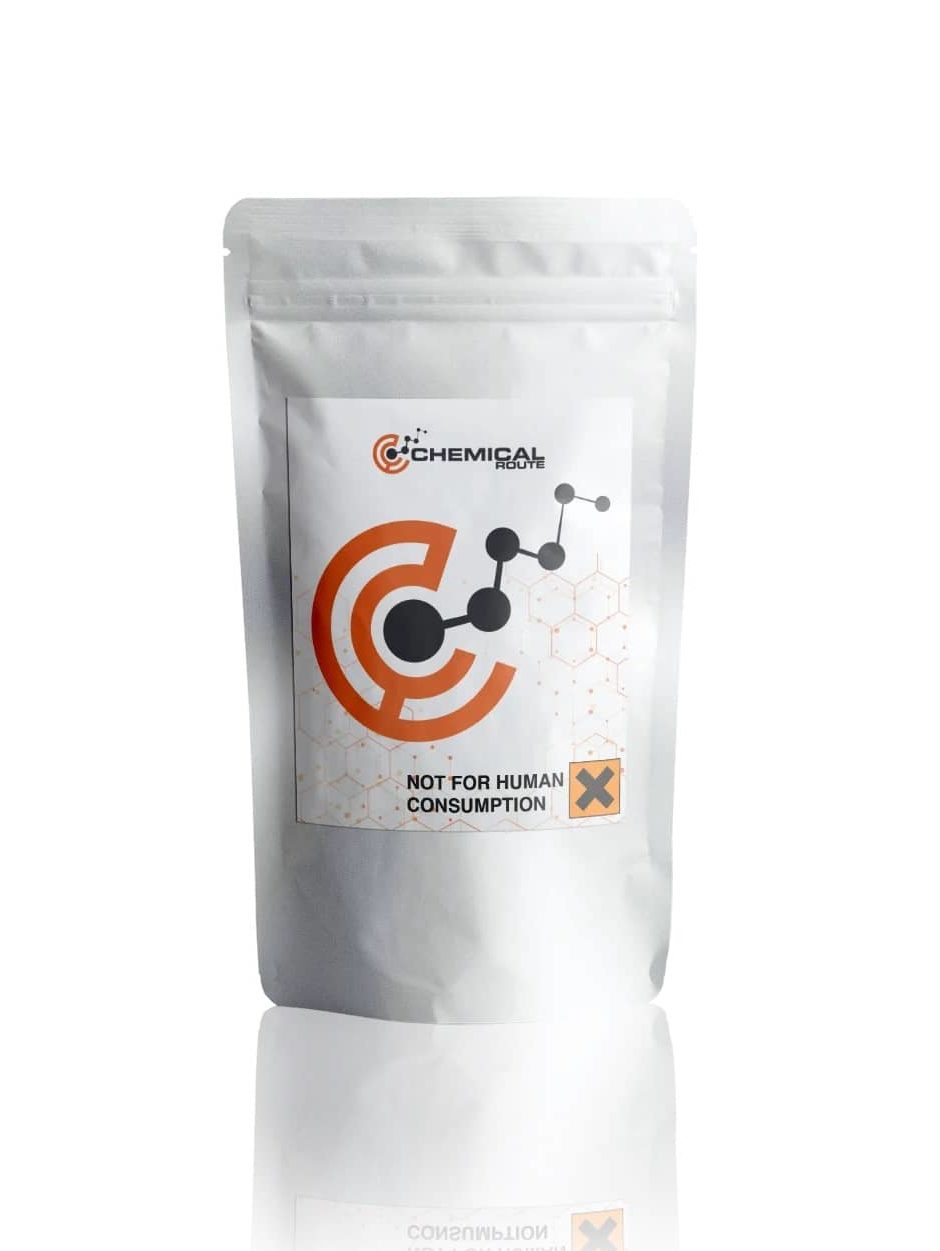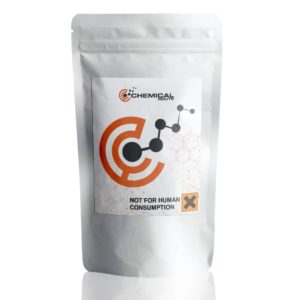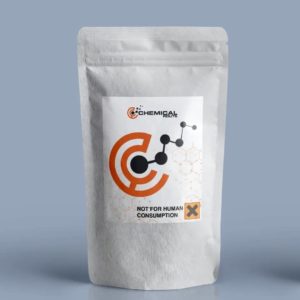Description
4-MAR, 4-Methylaminorex
Product information IUPAC 4-Methyl-5-phenyl-4,5-dihydro-1,3-oxazol-2-amine Synonyms 4-MAR, 4-Methylaminorex, U4Euh CAS 3568-94-3 Formula C10H12N2O Molecular Weight 176.21 g·mol−1 Purity 99.0 % min. Formulations A neat solid, Powder
- DMF: 30 mg/ml
- DMSO: 30 mg/ml
- Ethanol: 30 mg/ml
- PBS (pH 7.2): 10 mg/ml
4-MAR, 4-Methylaminorex, U4Euh
The drug 4-Methylaminorex, which is also known as U4Euh, is a stimulant that was first synthesized by the company of McNeil in 1960.
Although 4-methylaminorex is similar to methamphetamine in its effects, it has a longer duration. In animal experiments, it was shown that this drug can have an abuse liability similar to that of amphetamine and cocaine. One study revealed that the effects of this drug on the brain’s electrical properties were similar to those of S(+)amphetamine.
A second study revealed that rats trained to discriminate between S(+)amphetamine and amphetamine by either giving them either a saline solution or a combination of these two drugs. The rats that were trained to discriminate between the two drugs were then instructed to treat themselves with cocaine.
In two studies, the effects of cis-4-methylaminorex on the self-administration of primates were studied. The animals were given either a vehicle or a combination of these two drugs. One of the doses of 4-methylaminorex exhibited higher levels of self-administration when compared to the control group.
Chemistry
The four stereoisomers of 4-Methylaminobenzoate are: ()-cis, ()-trans, (4R,5S), and enantiomeric (4R,5S). These are commonly used recreationally. The enantiomeric (4R,5S)-isomer is usually produced by taking advantage of the dl-phenylpropanolamine’s cyclization with a combination of bromine and sodium cyanide.
An alternative synthesis route involves replacing the potassium cyanide or sodium cyanide with a potassium or sodium cyanate to form an intermediate. This method was performed in microgram using the dl-phenylpropanolamine’s hydrochloride salt. However, some side-products were noted.
The four stereoisomers of 4-Methylaminobenzoate are: ()-cis, ()-trans, (4R,5S), and enantiomeric (4R,5R). The process is similar to that of the previous generation, except that instead of dl-norephedrine, the starting material is dl-norephedrine. The resulting cyanate reaction is performed differently from the one performed by the cyanogen bromide. In the micrograph of the DEA, it shows that the former is transformed into the cis isomer and the latter into the trans isomers.
Research on Effects
It can cause long-lasting effects, with most people experiencing a lasting effect of up to 16 hours depending on the dose. It can also be taken orally or insufflated. The effects are stimulant, and it can also produce an increase in attention and cognition.
There is currently no evidence supporting the claim that 4-methylaminorex is more effective than other psychostunulants. It also lacks the safety profile of some of the commonly used drugs such as dextroamphetamine and methylphenidate.
In blood, the concentration of 4-methylaminophen was 21.3 mg/L and in urine, 12.3 mg/L. A study has shown that excretion of this drug in urine can be observed. The study, conducted on rats, involved four intramuscular injections of the trans-4-methylaminophen, which resulted in a 5-mg/kg isomer.
A study was conducted on the distribution and pharmacokinetics of 4-methylaminorex in rats. It was shown that this compound can be used in treating pulmonary hypertension. It was also discovered that this compound can be beneficial in the treatment of other conditions.
The toxicological and physiological properties of this compound has not been analyzed. Usage of this Chemical should be for research and forensic purposes only. WARNING This product is not for human or veterinary use. 
This product is only available to persons of 21 years old and above.
Hazard statement(s)
| H302 | Harmful if swallowed |
| H315 | Causes skin irritation |
| H319 | Causes serious eye irritation |
| H332 | Harmful if inhaled |
| H335 | cause respiratory irritation |
| H336 | cause drowsiness or dizziness |
| Precautionary statement(s) | |
| P264 | Wash hands thoroughly after handling |
| P280 | protective gloves/protective clothing/eye protection/face protection |
| P305 + P351 + P338 | IF IN EYES: Rinse cautiously with for several minutes. Remove contact lenses, if present and easy to do. Continue rinsing. |
| P337 + P313 | If eye irritation persists: Get medical advice/attention |
| P261 | Avoid breathing dust/ fume/ gas/ mist/ vapors/ spray |
| P271 | Use only outdoors or in a well-ventilated area |
| P304 + P340 | IF INHALED: Remove victim to fresh air and keep at rest in a position comfortable for breathing |
| P312 | Call a POISON CENTER or doctor/physician if you feel unwell |
| P403 + P233 | Store in a well-ventilated place. Keep container tightly closed |
| P405 | Store locked up |
| P501 | Dispose of contents/container to a licensed disposal company |




Reviews
There are no reviews yet.